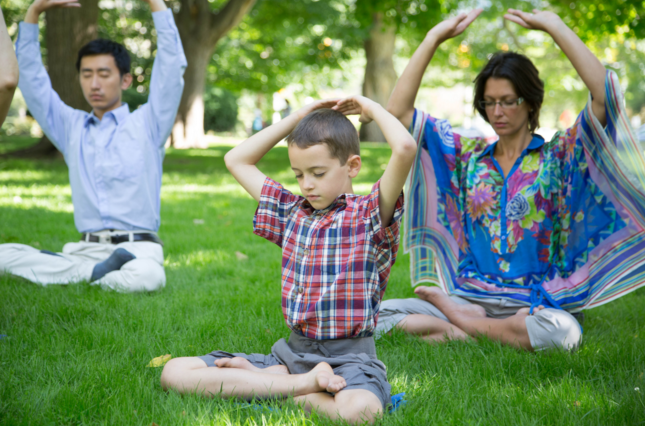
Advertisement
Bipolar disorder is gaining ground worldwide and can often go undetected. According to statistics, it is the sixth leading cause of disability in the world. Conventional medical treatments may have their place but they are far from adequate and there are enough testimonies to this effect.
Of course the idea is not to self-diagnose, but mood swings are often good enough indicators that something is amiss. Lifestyle-related stress and anxiety is also picking up speed and the sooner we arrest it, within the comfort of our own homes, so much the better for us. A good place to begin addressing these fluctuating mood patterns and anxiety attacks, is the practice of yoga. Hatha yoga specifically, and pranayama, can do wonders for relieving panic attacks, anxiety, grief and held negative emotions.
Hatha yoga re-establishes our forgotten ability to release what we don’t need. It reminds us through gentle coaxing that release is not merely a physical consequence but an emotional and spiritual necessity if we are to not just exist but to thrive. According to Harvard health publications which writes in an overview of yoga research, “indeed, the scientific study of yoga demonstrates that mental and physical health are not just closely allied, but are essentially equivalent. The evidence is growing that yoga practice is a relatively low-risk, high-yield approach to improving overall health.”
The effects of pranayama on anxiety
Anxiety is something most people go through almost as a matter of course, on a regular basis, given the kind of stresses humans are getting exposed to, including the incessant bombarding by electronics. There are degrees of severity, however, and based on this psychiatrists have classified them into three types, namely general anxiety, phobias and panic disorder. Some amount of anxiety we are told is actually a good thing because it acts as an alarm when danger is close.

However, if you are always anxious about everything and nothing and anxious about being anxious on top of that, then it is a vicious cycle, which can impair your normal day-to-day functioning.
Whatever the case, be it phobia, panic or general anxiety, there are implications for the person’s social, emotional well being and in some cases even their physical well being.
One of the ways in which anxiety can be managed is through the practice of pranayama.
Pranayama is an age-old technique developed by the Yogis of ancient India as the key to inner wellness. It is the technique of breath manipulation to achieve desired levels of emotional and physical wellness.
Yogis often say, “Breath is key”. Well, key to what? While the body is a tangible entity, the mind for most of us is an abstraction. That is to say, it is not as easy to become aware of the mind, as it is to become aware of the body. The breath is therefore, the bridge that connects body and mind. Becoming aware of your breath then, is key to becoming aware of your mind.
Consider this: when you are angry or upset, observe your breath. You will notice that your breath is guided by the emotion – there is a distinct shortness of breath when it is associated with anger. Similarly when you are upset, you feel a lump in your throat and so on. It follows logically therefore that if your breath can bear testimony to your mental state, then your breath can also be used to alter your mental state. Your breath can guide your emotions. This is precisely where pranayama can be invaluable.
The word pranayama is derived from two words, prana, meaning life force and ayama meaning to lengthen or expand. Yogis assert that prana is the energy of the breath, not the breath itself that pervades the body.
Breathing, an involuntary action can be made voluntary through the practice of pranayama. That is, the part of the brain that controls our breathing is the primitive brain or brain stem. This control can be shifted to the frontal lobe through the sustained practice of pranayama, so that it is no longer a mechanical activity, but a conscious one.
The point here is two-fold:
1.The next time you feel an emotion rise up in your chest or throat, take your awareness to your breath. You will find yourself calming down very quickly and your body relaxing along with that.
2.Your breath is your best ally, so learn to use it to your advantage.
A sustained daily practice over a significant period of time is essential in order to observe lasting results. That said, you will start to feel different right from the word go. Consult a qualified yoga therapist who can take you through the practices and explain the benefits and the potential contraindications, where necessary. Yoga is only a way to manage any condition and is often termed adjunct therapy, meaning, “in addition to”. It can work as a stand alone treatment sometimes depending on the severity of the condition you are aiming to treat. However, what seems like a simple case of mood swing on the surface, can be a pointer to something much more complex.
Submit a correction >>
This article may contain statements that reflect the opinion of the author
Advertisement
Advertisements















